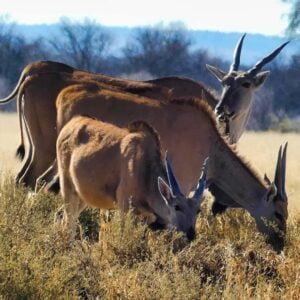In the heart of Namibia, you will have the opportunity to get up close and personal with the cats, and other wildlife, that the refuge hosts. Participate in research on these animals, while contributing to their conservation by helping out at the refuge, which is dedicated to the rehabilitation of wildlife in its natural habitat. You will divide your time between the research centre and performing daily tasks while participating in the internship at an animal shelter.
The reserve is nestled in the Namibian bush, just 45 km from the capital of Namibia, Windhoek. Our local NGO, which supervises the internship at an animal sanctuary, has now become a world-renowned conservation organization. They provide shelter and a second chance to many injured, orphaned, or endangered species.
The goal is, whenever possible, to release the animals back into the wild. Only those animals that are too sick or have become too accustomed to humans and are unable to survive on their own remain in the sanctuary. Volunteer assistance is essential for us to continue caring for these animals. Like all our animal internship programs abroad, this project in Namibia allows participants to earn academic credit while contributing to the protection of the region’s wildlife.
Interns have the wonderful opportunity to actively participate in the conservation, rehabilitation, care, and research of African wildlife. The sanctuary currently serves as a safe haven for orphaned, injured, or threatened animals, including lions, leopards, cheetahs, wild dogs, caracals, warthogs, antelopes, and baboons, as well as many birds, small African mammals, and farm animals. The help of participants, who are committed to wildlife protection, is crucial in caring for the animals in recovery or permanent residence in the sanctuary, and contributes to maintaining and developing the sanctuary. Furthermore, they will have access to a research center to participate in various studies concerning these wild species as part of their internship at an animal sanctuary. You will be immersed in their daily lives and able to observe them up close!
All tasks are divided into groups according to a rotation system that ensures everyone can participate in the various experiences available.
Among the daily activities at the sanctuary, you will be able to:
– Prepare food and feed the animals
– Clean enclosures
– Improve the living conditions of the animals
– Care for newborns
– Perform physical tasks such as building new facilities
– Conduct research (including monitoring free-ranging carnivores, analyzing camera traps, and GPS data)
On Saturdays, everyone works; there are fewer activities, which mainly consist of preparing food for the animals, feeding, cleaning the enclosures, and tidying up the camp. Sundays are voluntary, but volunteers can also relax at the lodge, which has a swimming pool, and enjoy lunch for around 20 euros, with Wi-Fi available for those who wish.
– Desert program
Located in the breathtaking landscapes of the southern mountains, ancient canyons and caves, fascinating geological formations, and five natural springs, our research center is truly unique and houses one of the Foundation’s carnivore research programs—plus, it is one of only three wine estates in Namibia. Areas of interest include the leopard, human-wildlife conflict mitigation, and assistance in the estate’s vineyard.
– Desert program #2
About 2 to 3 hours further southwest from our research center below, and at the border of the Namib Naukluft Park, lies our desert retreat. Red sand dunes, vast grasslands, and impressive mountain ranges make up this serene setting.
The park is home to cheetahs, brown hyenas, spotted hyenas, leopards, and a wide variety of other desert-adapted species. Our reserve spans 352 km² of desert landscapes where volunteers participate in vital research and conservation efforts for these species. Research is primarily conducted on the spotted hyena, small carnivores (caracal and black-backed jackal), and human-wildlife conflict mitigation.
Special Program:
– Elephant program (transfer from Wednesday to Wednesday / Anti-malarial treatment highly recommended from November to March)
Our research project on elephants and wild dogs is located east of the Etosha National Park. This animal sanctuary internship project in Namibia covers an area of approximately 3,000 km², and the goal of our work is to mitigate human-wildlife conflict with landowners and Namibian farmers.
Human activities have negatively impacted native wildlife, particularly two of Africa’s iconic species: the African painted dog (or wild dog) and the African elephant, both of which have endured decades of suffering due to habitat fragmentation, hunting, and persecution. Our foundation’s researchers work in the Mangetti complex in northern Namibia to protect wild populations of African dogs and elephants, better understand the levels and causes of conflict between these two species and the local population, and implement solutions to mitigate conflicts.

The goal is, whenever possible, to release the animals back into the wild. Only animals that are too sick or have become familiar and are not able to survive in the wild on their own remain in the sanctuary. The help of volunteers is essential for us to continue to care for these animals. As with all of our animal internship programs abroad, this project in Namibia allows you to gain university credits while contributing to the protection of animals in the region.
Interns have the wonderful opportunity to actively participate in the conservation, rehabilitation, care and research of African wildlife. The sanctuary currently provides a safe haven for orphaned, injured, and endangered animals, including lions, leopards, cheetahs, wild dogs, caracals, warthogs, antelopes, and baboons, as well as many birds, small African mammals, and farm animals. The help of participants, who are involved in wildlife protection, is essential to help us care for animals in remission or in permanent residence in the sanctuary, and helps maintain and develop the sanctuary. In addition, they will have access to a research centre to participate in various studies concerning these wildlife species as part of the internship in an animal shelter. You will be immersed in their daily life and will be able to analyse them closely!
All projects are divided between groups on a rotating basis to ensure that everyone can participate in the various experiences available.
Among the daily activities on the refuge, you will be able to :
- Prepare food and feed the animals
- Clean the pens
- Improve the living conditions of the animals
- Care for newborns
- Perform physical work such as construction of new facilities
- Conduct research (including free-ranging carnivore monitoring, camera and GPS data analysis)
On Saturdays everyone works, there is less activity, it's just preparing food for the animals, feeding, cleaning the pens and cleaning the camp. Sunday is on a voluntary basis, but volunteers also have the opportunity to relax at the lodge where there is a swimming pool and lunch for about £20 and wifi is available for those who want it.
- Desert program
Set in the breathtaking scenery of the Southern Mountains, ancient canyons and caves, fascinating geological formations and five natural fountains, our research center is truly unique and houses one of the Foundation's carnivore research programs - as well as being one of only three wineries in Namibia. Areas of work include leopards, human-wildlife conflict mitigation and helping in the wine cellar.
- Desert program n°2
About 2 to 3 hours southwest of our research center below, and on the border of the Namib Naukluft Park, is our desert retreat. Red sand dunes, vast grassy plains and the imposing mountain ranges constitute the serene setting.
The park is home to cheetahs, brown hyenas, spotted hyenas, leopards and a host of other desert-adapted species. Our reserve covers 352 km2 of desert landscape where volunteers participate in vital species research and conservation. Research is primarily conducted on spotted hyenas, small carnivores (caracal and black-backed jackal), and human-wildlife conflict mitigation.
Special program
: - Elephant program(transfer from Wednesday to Wednesday / Malaria treatment strongly recommended from November to March)
Our elephant and wild dog research project is located east of the Etosha National Park Reserve. This internship project in a wildlife refuge in Namibia covers an area of about 3,000 km² and the objective of our work is to mitigate human-wildlife conflict with Namibian landowners and farmers.
Human activities have had a detrimental impact on native wildlife, including two of Africa's iconic species: the African painted dog (or wild dog) and the African elephant, both of which have endured decades of suffering due to habitat fragmentation, hunting and persecution. Our foundation's researchers are working in the Mangetti complex in northern Namibia to protect wild populations of African wild dogs and elephants, to better understand the levels and causes of conflict between these two species and the local population, and to implement solutions to mitigate conflict.
In 2003, the founders decided to establish a clinic following the tragic death of a San baby.
For example, the Lifeline Clinic was established in the remote village of Epukiro, Namibia, to provide free health care to the San people. In 2005, in association with their partners, the founders purchased the Frauenstein farm on the outskirts of Windhoek, transformed it into a nature reserve and built a refuge on the property. The main goal of the shelter was to create jobs for all those that the Lifeline clinic was hosting.
The Animals and Environment Foundation opened in 2007 with the goal of preserving Namibia’s land, cultures and wildlife.
We believe in an Africa where :
– Humans and animals can live and thrive together.
– Wildlife is protected and valued, and the animals are well treated and the environment respected.
– It is possible to promote and defend the fact that nature belongs only to itself.
– Crops, especially Bushman crops, are integrated into our conservation projects.
– Human-animal conflicts can be mitigated.
– Innovative methods and concepts can be implemented to advance the protection of species and their habitat.
For example, the Lifeline Clinic was established in the remote village of Epukiro, Namibia, to provide free health care to the San people. In 2005, in association with their partners, the founders purchased the Frauenstein farm on the outskirts of Windhoek, transformed it into a nature reserve and built a refuge on the property. The main goal of the shelter was to create jobs for all those that the Lifeline clinic was hosting.
The Animals and Environment Foundation opened in 2007 with the goal of preserving Namibia's land, cultures and wildlife.
We believe in an Africa where :
- Humans and animals can live and thrive together.
- Wildlife is protected and valued, and the animals are well treated and the environment respected.
- It is possible to promote and defend the fact that nature belongs only to itself.
- Crops, especially Bushman crops, are integrated into our conservation projects.
- Human-animal conflicts can be mitigated.
- Innovative methods and concepts can be implemented to advance the protection of species and their habitat.
This program is available for up to 12 weeks, contact us for pricing and availability.
Duration in weeks | Registration fees |
|---|---|
2 weeks | 1680 € |
|---|---|
3 weeks | 2430 € |
|---|---|
4 weeks | 3180 € |
|---|---|
5 weeks | 3930 € |
|---|---|
6 weeks | 4680 € |
|---|---|
7 weeks | 5430 € |
|---|---|
8 weeks | 6230 € |
|---|---|
9 weeks | 7030 € |
|---|---|
10 weeks | 7830 € |
|---|---|
11 weeks | 8630 € |
|---|---|
12 weeks | 9430 € |
|---|---|
16 weeks | 12530 € |
|---|---|
| Duration | Fees to be paid upon registration |
|---|---|
| 4 Weeks | 3190€ |
| 6 Weeks | 4660€ |
| 8 Weeks | 6260€ |
| 10 Weeks | 7860€ |
| 12 Weeks | 9460€ |
Housing is allocated by local NGOs, not by Freepackers - the descriptions are there to give you an idea of the type of accommodation, as it is very likely that conditions will vary on site depending on the number of volunteers, weather conditions, availability, etc. Each volunteer will be accommodated according to the stated conditions, but it is possible that the accommodation may not match the description or images shown on this site word for word, for example, in the case of annexed housing, renovations, relocations, etc.
Volunteers will be accommodated in tents (2 to 4 people per tent)
- All linen will be provided.
- The volunteer house is about 1 km from the main house, and is safe and secure.
- Swimming pool available.
- No visitors are allowed on the property without the permission of the project manager.
Breakfast consists of cereal, fruit, yoghurt, toast and spreads.
Lunch can include cold or hot meals, such as wraps, sandwiches, salads, pasta...
Dinner consists of a hot meal such as a traditional South African barbecue (braai) with meat or chicken.
On-site facilities
- A laundry service is available on site, you can ask for the conditions on arrival.
- There is no internet on site due to poor reception. We recommend that volunteers purchase a SIM card upon arrival.
In order to volunteer in Namibia, it is advisible to obtain a visa from the Namibian High Commission (www.namibiahc.org.uk). It is necessary to be in possession of a passport valid for at least 6 months from the date of the end of your stay in Namibia.
For any international project, Real-step requires the subscription of a travel insurance including the coverage of accidents, diseases, repatriation and includes civil liability in case of damage to third parties.
Please note that third-party liability insurance is included in our partner's insurance policies. Chapka Cap Student, and Cap Working Holiday as it is compulsory for internships and studies abroad. If you take out your Cap Student or Cap Working Holiday insurance online with our partner Chapka, you will receive an immediate 5% discount by clicking on one of the 2 links above!
If you subscribe to another insurance, we will ask you to send us a copy of your certificate in English.

Contact us

Latest news, new programs, travel ideas… one news per month guaranteed without spam!








